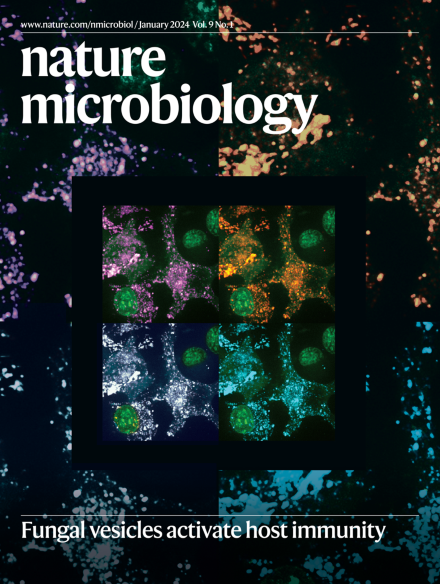Pseudomonas syringae subpopulations cooperate by coordinating flagellar and type III secretion spatiotemporal dynamics to facilitate plant infection
IF 20.5
1区 生物学
Q1 MICROBIOLOGY
引用次数: 0
Abstract
Isogenic bacterial populations can display probabilistic cell-to-cell variation in response to challenges. This phenotypic heterogeneity can affect virulence in animals, but its impact on plant pathogens is unknown. Previously, we showed that expression of the type III secretion system (T3SS) of the plant pathogen Pseudomonas syringae displays phenotypic variation in planta. Here we use flow cytometry and microscopy to investigate single-cell flagellar expression in relation to T3SS expression, showing that both systems undergo phenotypic heterogeneity in vitro in apoplast-mimicking medium and within apoplastic microcolonies throughout colonization of Phaseolus vulgaris. Stochastic, spatial and time factors shape the dynamics of a phenotypically diverse pathogen population that displays division of labour during colonization: effectors produced by T3SS-expressing bacteria act as ‘common goods’ to suppress immunity, allowing motile flagella-expressing bacteria to increase and leave infected tissue before necrosis. These results showcase the mechanisms of bacterial specialization during plant colonization in an environmentally and agriculturally relevant system. Single-cell gene expression analysis reveals phenotypic heterogeneity to enable bacterial specialization over the course of plant colonization.


丁香假单胞菌亚群通过协调鞭毛和III型分泌的时空动态进行合作,促进植物侵染
等基因细菌群体在应对挑战时可以表现出细胞间的概率变异。这种表型异质性可以影响动物的毒力,但对植物病原体的影响尚不清楚。此前,我们发现植物病原体丁香假单胞菌(Pseudomonas syringae) III型分泌系统(T3SS)的表达在植物中表现出表型变异。在这里,我们使用流式细胞术和显微镜研究了单细胞鞭毛表达与T3SS表达的关系,结果表明,在体外模拟外质体培养基和外质体微菌落中,这两种系统在整个定殖过程中都存在表型异质性。随机、空间和时间因素塑造了表型多样化的病原体种群的动态,在定植过程中表现出分工:表达t3ss的细菌产生的效应物作为“共同商品”抑制免疫力,允许表达鞭毛的活动细菌增加并在坏死之前离开受感染的组织。这些结果展示了在环境和农业相关系统中植物定植过程中细菌特化的机制。
本文章由计算机程序翻译,如有差异,请以英文原文为准。
求助全文
约1分钟内获得全文
求助全文
来源期刊

Nature Microbiology
Immunology and Microbiology-Microbiology
CiteScore
44.40
自引率
1.10%
发文量
226
期刊介绍:
Nature Microbiology aims to cover a comprehensive range of topics related to microorganisms. This includes:
Evolution: The journal is interested in exploring the evolutionary aspects of microorganisms. This may include research on their genetic diversity, adaptation, and speciation over time.
Physiology and cell biology: Nature Microbiology seeks to understand the functions and characteristics of microorganisms at the cellular and physiological levels. This may involve studying their metabolism, growth patterns, and cellular processes.
Interactions: The journal focuses on the interactions microorganisms have with each other, as well as their interactions with hosts or the environment. This encompasses investigations into microbial communities, symbiotic relationships, and microbial responses to different environments.
Societal significance: Nature Microbiology recognizes the societal impact of microorganisms and welcomes studies that explore their practical applications. This may include research on microbial diseases, biotechnology, or environmental remediation.
In summary, Nature Microbiology is interested in research related to the evolution, physiology and cell biology of microorganisms, their interactions, and their societal relevance.
 求助内容:
求助内容: 应助结果提醒方式:
应助结果提醒方式:


